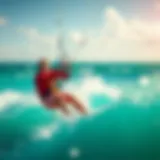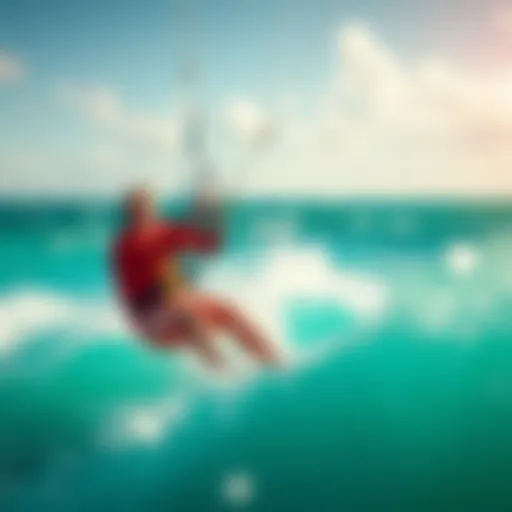Kite Surfing in Michigan: A Comprehensive Guide
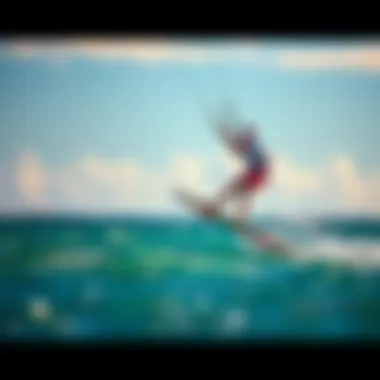
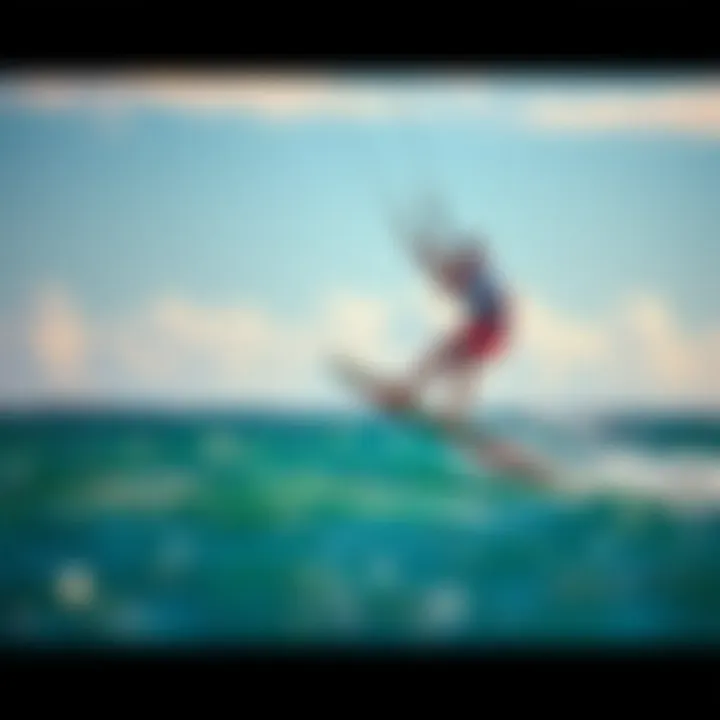
Gear and Equipment
Kite surfing in Michigan presents not just a thrilling experience, but also an opportunity to dive into the world of specialized gear. Getting the right equipment is essential, whether you’re just starting or you’re a seasoned pro. Let’s break this down.
Essential Kiteboarding Gear for Beginners
If you’re new to kite surfing, a few basic items can make a world of difference. First and foremost, you will need a kite. Look for a model designed for beginners, which typically comes in a smaller size. This allows for better control and easier launching.
Next, a decent harness is crucial. A seat harness is often recommended for beginners as it offers good support and is easier to handle when you’re still mastering the balance.
Don’t forget your control bar and lines; they’re the lifeline between you and the kite. Ensure to choose a bar that matches the size of your selected kite.
Wetsuits are another aspect not to overlook. Michigan waters can get chilly, so a good-quality wetsuit, typically 3/2mm thickness, is ideal for most of the year. This helps keep you warm while allowing for full range of motion.
Some essential protective gear includes:
- Impact vest: Offers buoyancy and can protect your torso from falls.
- Helmet: Highly recommended for safety, especially in crowded beaches or choppy waters.
- Booties: They provide traction and keep your feet warm on colder days.
Advanced Equipment for Experienced Riders
Once you’ve got the basics down, you might want to expand your kit. Intermediate and advanced kite surfers often opt for larger kites and those with specific features that cater to particular riding styles.
For instance, a surfboard or directional board can give you the ability to tackle waves effectively, while a twin-tip board can be great for flat water and tricks. It's important to consider what kind of conditions you’ll mostly be riding in Michigan's diverse climate.
A bar with adjustable settings offers convenience for fine-tuning your ride and enhancing performance. Look into a larger control bar with a longer line for more agility and speed.
Key Takeaways:
- Beginners should focus on smaller kites and supportive gear.
- Experienced riders can experiment with specialized boards and kites.
Techniques and Tips
Kite surfing is not just about the gear; mastering techniques can elevate your experience significantly. A few essential practices can enhance both your safety and skill level.
Safety Practices for Kiteboarding
Safety should always be front and center. Understanding the local conditions is vital—be aware of wind patterns, wave sizes, and possible hazards around your chosen spot. A quick heads-up to always use a quick-release mechanism on your harness can be a lifesaver in rough patches.
A few safety tips include:
- Always kite with a buddy: The buddy system is your best bet for quick support if something goes wrong.
- Practice self-rescue techniques: Knowing how to land safely is crucial in an emergency.
- Observe local regulations: Some areas may have specific rules regarding kite surfing. Check resources at NOAA or local parks to stay informed.
Training Techniques to Improve Your Skills
Improvement comes with practice and understanding your board movements and kite control. An effective way to build skills is by focusing on:
- Edge control: Learning how to control the edge of your board will greatly enhance your maneuverability.
- Kite control: Spend time flying the kite without a board to develop an intuitive grasp of its behavior.
Joining a local kite surfing community can also provide valuable insights, from finding better spots to tips from local pros. Websites like reddit.com house communities for shared knowledge about specific regions and can be a gold mine for newcomers.
"In kite surfing, it's not just about the ride; it's about understanding the dance between the wind, the water, and your own skills."
Adopting these techniques not only brings you closer to mastering kite surfing but also embeds you within Michigan's vibrant kiteboarding community, making your adventure all the more rewarding.
Remember, kite surfing is as much about the experience and community as it is about the thrill of the ride. Connect with others, share experiences, and enjoy the unique spots Michigan has to offer.
Intro to Kite Surfing in Michigan
Kite surfing, often viewed as a blend of surfing, windsurfing, and paragliding, has carved a unique niche in the realm of water sports. In Michigan, where the vast lakes are more than just stunning views, kite surfing has become an increasingly popular pursuit for many adventure enthusiasts. The state's natural beauty combined with varied weather conditions creates a backdrop that's not only picturesque but also ideal for those looking to harness the wind and ride the waves.
The significance of this sport in Michigan extends beyond recreational fun. It paves the way for community bonding, where kiteboarders unite to share experiences, tips, and techniques. More than just riding on water, it's about a lifestyle, a culture that promotes physical fitness and an unyielding appreciation for the great outdoors. While some may think of kite surfing as merely a thrilling pastime, for many in Michigan, it represents freedom; the freedom to explore the open waters that stretch as far as the eye can see.
Kite surfing in Michigan isn’t devoid of challenges either. The state’s weather can be unpredictable, varying from friendly winds to gusty storms, making it crucial for kite surfers to be well-informed and prepared. Understanding local locations, seasonal variations, and equipment specifics can greatly enhance the kite surfing experience while ensuring overall safety.
"Kite surfing is not just a sport; it’s an experience that connects you with nature, adrenaline and community all at once."
As we delve deeper into this comprehensive guide, we’ll explore the essential facets of kite surfing in Michigan—from the mechanics of the sport and necessary equipment, to optimization of local spots and seasonal considerations. Each section will equip you with the insights needed to enjoy this exhilarating sport, whether you’re a novice eager to learn or a seasoned rider looking for refined techniques or new destinations.
Understanding the Basics of Kite Surfing
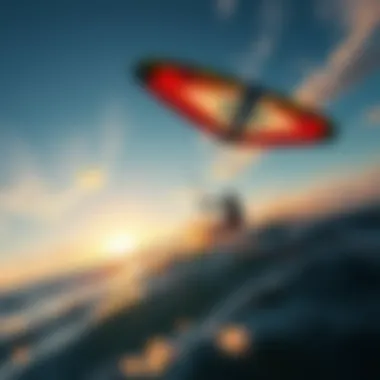
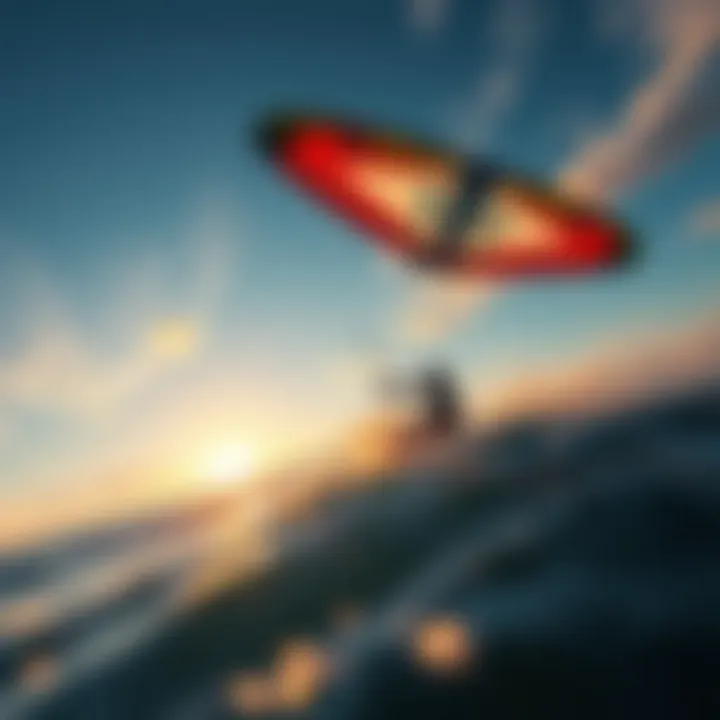
Kite surfing, at its core, is not merely a sport but a synthesis of wind, water, and human skill. Understanding the basics of this dynamic activity is crucial not only for beginners eager to soar above the waves but also for seasoned riders looking to refine their technique. Gaining a comprehensive grasp of the fundamentals ensures safety and maximizes enjoyment.
One of the primary elements in kite surfing is the connection between the kite and the surfer. A kite, properly maneuvered, can harness the wind’s power, allowing the rider to glide across water surface with grace and precision. This makes comprehending the basic mechanics not just essential but exciting. It empowers surfers to work in harmony with nature to create a thrilling experience. The exhilaration one feels when the kite catches the wind is unlike anything else.
Definition and Mechanics of Kite Surfing
At its simplest, kite surfing merges aspects of surfing, windsurfing, and paragliding. Surfers are pulled by a large kite, riding over water on a board akin to a surfboard but designed to hold up against the forces of the wind. The mechanics hinge on the physics of lift and drag, where the kite, although often believed to be the focal point, merely acts as a tool to harness the wind feed.
The interaction of wind with the kite creates lift, allowing it to rise into the air. Understanding this relationship helps surfers position their kite optimally, ensuring they can control their speed and direction. A solid grasp of how each adjustment—angling the kite into the wind, pulling on the control lines—affects performance keeps riders safe and enhances their ride.
The Equipment Landscape
The equipment you choose is fundamental to your experience in kite surfing. Knowing what's available, along with how each piece works, can drastically change your comfort level and performance on the water.
Types of Kites
Kites come in various shapes and sizes, each offering different flying characteristics. The two main types are inflatable kites and foil kites. Inflatable kites are the most common because they are user-friendly and provide stability in various conditions. Their essential characteristic is the air-filled chambers that keep them aloft and buoyant.
On the other hand, foil kites, while often providing superior speed and performance, require a heightened skill level. They differ due to their lack of a rigid structure, instead relying on fabric cells to catch the wind. While these kites may be challenging for beginners, their performance during lighter wind conditions can be advantageous. Thus, choosing which type is suitable might come down to the rider’s aspiration and local conditions.
Kiteboards and their Variants
Kiteboards themselves also have variants tailored for specific riding styles. The most common types include twin-tip boards that can be ridden in either direction, making them a popular choice for novices due to their balance and ease of use.
For advanced riders interested in freestyle tricks, directional boards are often favored. These boards excel in surf conditions and are specifically designed for carving through waves. The unique design of each type of board influences how the rider interacts with the water. Understanding these nuances ensures surfers select the right board for their desired thrill.
Safety Gear Essentials
Safety should never be an afterthought in kite surfing. Essential safety gear includes impact vests, helmets, and waste harnesses. An impact vest offers protection from falls, while a helmet safeguards against head injuries in tumultuous waters. A harness is key to controlling the kite with more ease, distributing the force exerted by the kite evenly across the body. The right equipment can make the difference during a wipeout or sudden changes in weather, emphasizing the importance of not only having gear but also choosing it wisely.
Optimal Locations for Kite Surfing in Michigan
When it comes to kite surfing, location is everything. Michigan, with its vast array of lakes and breathtaking waterfront scenes, offers kite surfers a diverse range of spots. Making the right choice can enhance your overall experience, whether you're a beginner or an old hand at this thrilling sport. In the following sections, we will explore some of the most optimal locations that Michigan has tucked away in its natural vault.
The Great Lakes: A Unique Playground
Lake Michigan
Lake Michigan stands out as a prominent choice for kite surfers all across the state. This massive body of water boasts consistent winds and expansive stretches of sandy shores, making it a top destination. The beauty of Lake Michigan isn’t just skin deep; its depth and water conditions allow for a range of activities. Surfers appreciate the typically steady winds, which can offer ideal conditions for both lesson and leisurely rides. Plus, panoramic sunset views are a cherry on top, accentuating every session.
One of the unique features of Lake Michigan is its unpredictable wind patterns. Kite surfers can sometimes find that the winds off the shore seem to differ significantly from those a mile out. These changing conditions can be a double-edged sword, so having experience in reading winds is crucial.
Lake Huron
Let’s not overlook Lake Huron, which presents a different flavor for kite surfing enthusiasts. Its vastness means you'll often find less crowded spaces compared to its famous cousin, Michigan. Its specific characteristic is the lengthy stretches of shallow waters combined with the ever-changing weather conditions. Kite surfers often experience the thrill of catching waves without the tumultuous crowd due to its many secluded beaches.
Lake Huron's unique feature is perhaps its dramatic shores that offer varied environments. From places with dense forests to rocky areas, kite surfers can immerse themselves in wild surroundings. However, keep in mind that the weather can shift in the blink of an eye, requiring participants to always stay alert.
Lake Erie
While more compact than Michigan and Huron, Lake Erie brings a robust variety of conditions favorable to kitesurfing. Its proximity to urban centers offers convenience, while its choppier waters provide fun challenges, especially for those seeking to improve their skills. The winds can be gusty at times, which can allow for tricks and jumps for the adept surfer.
The lake's unique feature is the availability of various spots along its shoreline, catering to different skill levels. From inexperienced beginners to seasoned veterans, there is something for everyone. However, kite surfers should exercise caution: Erie is known for sudden changes in weather.
Local Beaches and Spots
Best Onshore and Offshore Areas
When we talk about the best onshore and offshore areas in Michigan, one location that always comes to mind is the famous Holland State Park. This park possesses an illustrious beach that’s a hot spot for kite surfing. The conditions here are perfect for beginners and pros alike. The intermittent waves provide good practice and fun sailing experiences.
Another spot worth mentioning is the Traverse City area, known for its beautiful beaches and lively wind conditions that can make for exhilarating rides. The local community is supportive, often hosting events that cater to surfers.
However, it’s important to pay attention to crowds. Certain spots can get overcrowded during peak seasons, and another consideration might be the accessibility to facilities such as restrooms or parking.
Less-Known Hidden Gems
Now, if you're looking to really avoid the rush and explore more remote locations, Michigan has its fair share of hidden gems. One such spot is the small beach at Point Betsie. Tucked away, it's perfect for those who crave a quieter experience while still enjoying excellent wind conditions. The serene environment amplifies the adventure, allowing surfers to focus on their skills.
At the same time, head over to the lesser-known beaches around Lake St. Clair, which may not get mentioned in mainstream guides. Here, the winds dance lightly, and the compact areas offer cozy spaces for beginners to practice without feeling overwhelmed.
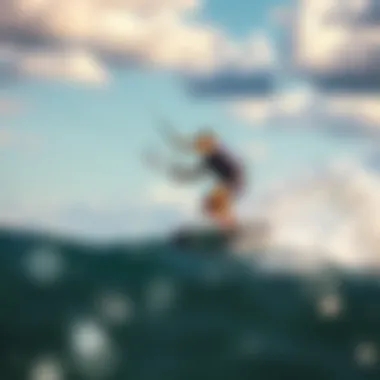
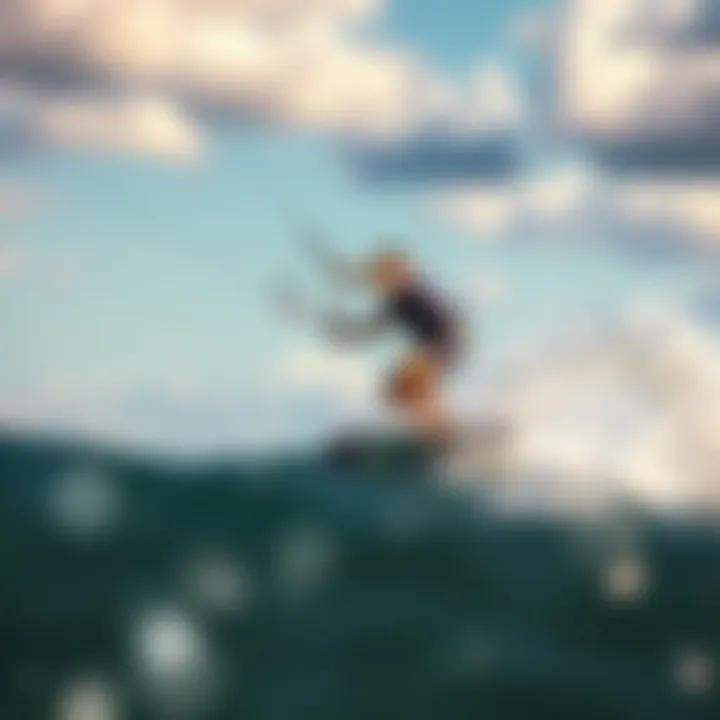
These hidden charms might not have the high accessibility and amenities like popular spots. They are peaceful but come with their own kind of magic that can be immensely rewarding for those who take the time to discover them.
Embrace the adventure, explore Michigan's diverse kite surfing locations, and find your ideal spot to ride the winds.
Seasonal Considerations for Kite Surfing
Kite surfing in Michigan isn’t just a summer fling; it’s a year-round affair. Each season has its own flavor, presenting unique conditions that can either make for exhilarating sessions or pose some serious challenges. Understanding the seasonal variations allows kite surfers to prepare better, enhance their skills, and ultimately enjoy the water to its fullest, regardless of the time of year. Here’s a closer look at how each season plays into the kite surfing experience.
Summer Winds and Conditions
During the summer months, Michigan transforms into a kite surfing hotspot. The combination of warmer weather and consistent winds provides ample opportunities for both seasoned riders and newcomers. Typically, the wind patterns are more predictable, with southwest winds often blowing steadily in the afternoons, making it prime time for hitting the water.
- Wind Speed: Summer winds typically range between 12 to 25 knots, ideal for most kite sizes.
- Water Temperature: As the temperature climbs, so does the water warmth. Wearing a shorty wetsuit or even board shorts is standard for summer riding.
Here’s what you can expect:
- Clear Skies & Warm Water: You’ll be happy to find the sun shining for hours, with the lake often being calm in the morning, perfect for practicing.
- Crowds: It’s no secret that summer attracts many kite surfers to the same beach. Sharing this space can be fun, but also creates the need to be vigilant about safety and personal space.
"The summer months in Michigan offer a playground where the winds carry laughter and the waves dance to their own rhythm."
Fall Challenges and Opportunities
As summer wanes, fall brings a change—not just in scenery, but in conditions too. While the temperatures drop, the winds can become more unpredictable, but that doesn’t mean kite surfers should pack it all away. In fact, fall can provide some of the most exciting sessions.
- Wind Variance: Fall winds can be gusty, often reaching up to 30 knots at times. Riders have to be cautious as they select the right kites for these variable conditions.
- Colder Waters: As the air cools, so does the water. A thicker wetsuit becomes necessary, often recommended at least a 4/3 mm to keep the chill at bay.
Embrace the opportunities:
- Sparser Crowds: With the end of summer fun, most beachgoers leave. This allows plenty of room to maneuver and practice tricks.
- Gorgeous Scenery: The beautiful fall foliage across the coastline makes for stunning backdrops while riding.
Winter Kite Surfing: A Unique Experience
You might think kite surfing goes into hibernation come winter, but not for the brave at heart! Winter kite surfing in Michigan is an experience quite unlike any other. With frozen lakes and chilly winds, the allure is about testing limits and enjoying solitude.
- Ice Conditions: Safety is paramount here; always check ice thickness and stability before setting out. A consistent 4 inches is a generally safe guideline for activity.
- Wind Chill: The wind chill can be biting, requiring full winter gear—think: dry suits—along with insulated gloves and booties.
Here’s the thrill of winter kite surfing:
- Unparalleled Beauty: The stark contrast of a frozen lake under a bright blue sky provides a breathtaking arena for enthusiasts.
- Tranquility: The quietness of winter creates a meditative vibe, attracting only the most passionate kite surfers.
Each season in Michigan offers something to kite surfers—be it the buzz of summer, fall's thrilling unpredictability, or the serene landscapes of winter. Understanding these seasonal dynamics empowers riders to make the most of their experiences on the water.
Techniques for Enhanced Performance
In the world of kite surfing, enhancing performance isn’t just about speed or height; it delves into a spectrum of techniques that enrich the entire experience on the water. These techniques provide the foundation for developing skills that can differentiate a novice from an expert. This section unpacks the crucial fundamentals for beginners and elevates seasoned riders through advanced methods, each aiming to improve control, efficiency, and overall enjoyment.
Fundamental Techniques for Beginners
For those just dipping their toes into the kite surfing scene, mastering fundamental techniques is essential. It lays the groundwork for enjoyment and safety in the sport. Key areas to focus on include:
- Kite Control: Understanding how to steer the kite effectively is paramount. This means practicing with the bar, learning how to pull and release to loop the kite. The goal here is to develop a "feel" for the wind and how it affects your ride.
- Body Positioning: Beginners must learn how to position their body for balance. Keeping a low center of gravity while riding helps maintain stability, making it easier to respond to changing water conditions.
- Water Starts: The ability to transition from water to riding smoothly is crucial. Practicing the timing of pulling on the kite and pushing off the water can yield a quick improvement in getting up on the board.
These foundational skills not only enhance the immediate experience but also pave the way for more advanced techniques as riders progress.
Advanced Skills for Seasoned Riders
Once the basics are under your belt, it’s time to stretch your limits with advanced skills. This level of kite surfing opens doors to creativity and challenges riders to explore new heights and tricks.
Tricks and Maneuvers
Engaging in tricks and maneuvers is where kite surfing evolves from a sport into an art form. These tricks range from simple jumps to complex spins, requiring a mix of technique, timing, and finesse. The key characteristic of these maneuvers is their ability to showcase individual style while pushing personal boundaries.
- Unique Feature: What sets these tricks apart is the need for a solid understanding of kite dynamics. Riders must master how to use the kite’s lift effectively to achieve desired heights and moves. This makes it a popular choice for many looking to add flair to their riding.
- Advantages/Disadvantages: While the thrill of executing a trick can be intoxicating, it typically involves a higher risk. Miscalculating a maneuver can lead to falls or accidents, making practice and preparation essential before attempting tricks in more challenging conditions.
Jumping Techniques
Jumping is perhaps the most exhilarating aspect of kite surfing, capturing the essence of freedom that attracts many to the sport. This technique emphasizes controlled lift from the kite combined with an explosive takeoff from the water.
- Key Characteristic: The principal feature of jumping techniques is the rider’s ability to manage the kite’s power. Proper timing in edging the board and pulling on the bar is crucial for achieving lift without losing control.
- Advantages/Disadvantages: Successfully landing jumps can be immensely rewarding, but the learning curve is steep. Riders need to be aware of their surroundings, particularly wind direction, to mitigate the risk of injury during failed attempts.


Each of these advanced techniques, from tricks to jumps, requires commitment to practice and a readiness to adapt to varying conditions on Michigan’s waters. Through determination and training, kite surfers can elevate their performance, transforming into skilled riders who navigate the challenges of this exhilarating sport with confidence.
Safety Practices in Kite Surfing
When it comes to kite surfing, safety is not just a topic for discussion; it's a fundamental aspect that ensures a thrilling yet secure experience on the water. A variety of elements come into play—suitable equipment, the behavior of wind and water, and knowing how to react in emergencies. Skipping safety measures is a bit like jumping into a lake without checking for the depth first. It’s crucial to keep an eye on conditions and be prepared for whatever may arise.
One of the biggest benefits of practicing safety revolves around preventing accidents. A kite surfer who understands the right protocols and practices is less likely to find themselves in precarious situations. This not only protects oneself but also keeps others in the vicinity safe—after all, kite surfing is often a communal activity. This section will cover two vital areas: understanding wind and water conditions and having solid emergency protocols in place.
Understanding Wind and Water Conditions
The first line of defense in kite surfing safety starts with understanding the wind and water conditions. Wind acts like the engine behind your kite surf adventure. It’s important to know how to read the wind's mood—whether it’s calm and gentle or wild and unpredictable. For instance, gusty winds can be particularly treacherous, leading to sudden shifts and heightened risks. Here are some points to consider when evaluating the conditions:
- Wind Strength: Ideally, wind speeds between 12 to 25 knots are optimal for kite surfing. Anything above or below can be risky.
- Wind Direction: Offshore winds can push a surfer away from land, complicating rescues. Always seek spots where onshore winds prevail.
- Water Conditions: Assess the water surface. Choppy waters can make controlling the kite more difficult, while flat waters offer a more forgiving experience for beginners.
- Weather Changes: Keep an eye on changing weather patterns. Sudden storms can whip up strong winds and high waves, creating an unsafe environment. Always check a reliable source for weather updates, such as Weather.gov.
"A good sailor always knows the sea; a good kite surfer knows the wind first."
Understanding these elements can help prevent accidents and ensure the safety of everyone involved. It’s about becoming familiar with the environment and adapting your kite surfing experience accordingly.
Emergency Protocols
In the event of an emergency, having a robust plan in place can make all the difference. It’s not just about flailing your arms and hoping someone sees you—being prepared is key. Let’s break down some essential emergency protocols for kite surfers:
- Know Your Equipment: Familiarize yourself with your gear and understand how to use it in a crisis. This includes how to quickly release your kite if needed. This crucial knowledge can turn a potentially dire situation into something manageable.
- Communicate with Others: Make sure to use hand signals or radios if you're out with a group. Always be aware of each other's location and condition.
- Self-Rescue Techniques: Learn how to perform a self-rescue. Knowing how to relaunch your kite or board can be a lifesaver if you're separated from your gear in challenging conditions.
- Safety Gear: Wearing a personal flotation device is a smart move and often mandatory in many locations. It adds an extra layer of protection and peace of mind.
- Emergency Contacts: Keep critical numbers handy. Whether it’s local rescue services or friends who can assist, having this information can expedite help in a tough spot.
Understanding these emergency protocols could very well save your life or someone else's. Ensuring this knowledge is second nature will allow any kite surfer to navigate the challenges of the sport with confidence.
Integrating smart safety practices into your kite surfing routine will not only enhance the fun but also enrich the experience for everyone involved. Whether you are a beginner or a seasoned rider, keeping safety top of mind is a practice worth investing in.
Community and Events in the Kite Surfing Scene
In the world of kite surfing, having a supportive community can make or break your experience. In Michigan, the kite surfing scene is more than just a collection of individuals; it is a vibrant network of enthusiasts who rally together to share knowledge, experiences, and passion for the sport. This camaraderie is essential for both novices and experienced surfers alike, as it provides a well of resources and emotional backing needed to tackle the challenges of kite surfing.
The excitement of learning new techniques, sharing the thrills of catching a wave, or simply swapping gear and stories fosters an environment where everyone can thrive. Beyond personal skill development, this communal aspect also instills a sense of belonging, which is important when engaging in a physically demanding activity that connects individuals with nature.
Moreover, the various events organized around kite surfing contribute significantly to the local culture. They promote awareness of the sport, invite fresh talent, and create a festive atmosphere that attracts spectators and participants alike. Here, we delve deeper into the local clubs, annual competitions, and engaging festivals that feature prominently in Michigan's kite surfing scene.
Local Clubs and Organizations
Local clubs and organizations form the backbone of kite surfing in Michigan. They are responsible for organizing training sessions, social events, and group outings that make kite surfing more accessible to everyone. Joining a local club not only provides you with access to like-minded individuals but also allows for easier navigation of regulatory requirements that may exist in different areas.
Key organizations such as the Michigan Kiteboarding Association and local chapters across the state offer members various benefits, including:
- Skill Development: Regular workshops featuring experienced instructors who can help refine your techniques.
- Community Events: Opportunities to meet other kite surfers, share experiences, and participate in local gatherings.
- Advocacy and Support: Programs aimed at preserving local kite surfing spots through collaborative efforts with local authorities.
By being part of a club, you also gain insights into safety practices that are important for enjoying a secure surfing experience.
Competitions and Festivals
Kite surfing competitions and festivals represent the pinnacle of the community's spirit in Michigan. They are not simply events based on competing; they encompass celebration, learning, and the promotion of the sport.
Annual Kiteboarding Competitions
Annual kiteboarding competitions are a highlight of Michigan's water sports calendar. They generally draw participants from various regions, showcasing skills that range from casual to highly advanced. These competitions offer
- Showcasing Talent: New and seasoned riders gain a platform to demonstrate their abilities, which can be incredibly motivating for all involved.
- Prizes and Recognition: Winners receive awards, which can bolster their career in kite surfing and provide global exposure.
- Community Unity: These events foster a spirit of camaraderie, as participants and spectators come together to celebrate the sport's diversity and culture.
However, not everything is all sunshine and rainbows. The competition format can sometimes cause undue pressure on riders, and at times, lead to a less enjoyable experience for those who prefer a laid-back approach. You may see it as a double-edged sword where excitement meets the demand to perform.
Community Gatherings and Workshops
Community gatherings and workshops create a relaxed environment focused on knowledge sharing rather than competition. These events are essential in building relationships within the kite surfing community.
Important features of these gatherings include:
- Skill Development: Workshops led by experienced surfers teach vital skills, safety measures, and maintenance tips for gear, while also boosting your overall confidence.
- Social Networking: A chance to meet a diverse group of people passionate about kite surfing, making it easier to find a mentor or friend to ride with.
- Accessibility: These gatherings often welcome all skill levels and ages, making it a truly inclusive atmosphere.
The unique aspect of community gatherings is their focus on mentorship over mastery, which is especially beneficial for beginners who might feel intimidated by the competitive aspect of kite surfing. This balance of learning and social interaction can play a significant role in fostering upcoming talent in future events.
Closure
In exploring the world of kite surfing in Michigan, one cannot underestimate the importance of synthesizing all the gathered knowledge. This article captures a wide range of aspects from identifying optimal kite surfing locations to understanding both the challenges and triumphs that come with the territory. Kite surfers, regardless of their skill, glean insights on how to better engage with this dynamic sport in a way that enhances both enjoyment and safety.
The depth of information covered means that whether a beginner looking to make waves or an experienced rider searching for new thrills, there's something valuable here. From seasonal conditions to advanced techniques, each section stacks up like a well-constructed kite surf rig, ensuring a solid understanding of what’s necessary to ride the winds successfully.
One can't overlook the relevance of community and local events, too. Networking with fellow kite surfers not only fosters camaraderie but also opens doors to opportunities for learning and enhancing skills. Participating in competitions or even casual gatherings can significantly enrich one’s experience, bringing about an environment that bolsters personal growth in the sport.
So, as one wraps up this comprehensive guide, keep in mind that kite surfing is more than just a pastime; it’s a pathway to adventure. Understanding the interplay of wind, water, and technique, paired with community involvement, makes for not just proficient kite surfing but a rewarding life experience. This exploration is an invitation to dive deeper into Michigan’s kite surfing culture, ensuring that every session on the water is met with confidence and excitement. Kite on!


